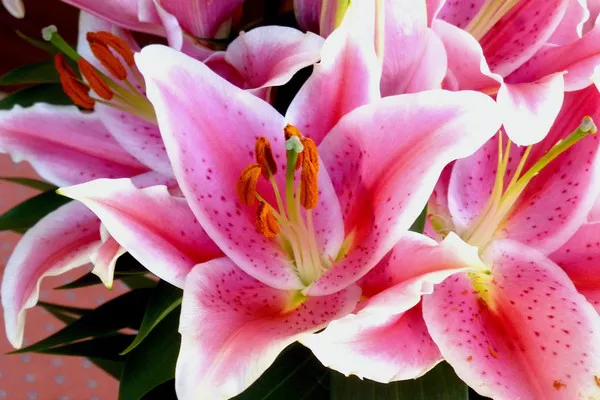Lilies are cherished for their elegant and vibrant blooms, making them a popular choice among garden enthusiasts. However, when your lily plants fail to produce those beautiful flowers, it can be a source of frustration. There are several reasons why lilies might not flower as expected, ranging from environmental factors to cultural practices. In this comprehensive guide, we will explore the various factors contributing to non-flowering lilies and provide practical solutions to help you revive your garden’s charm.
1. Environmental Factors
One of the most critical environmental factors affecting lily flowering is light. Lilies thrive in full to partial sun conditions. If your lilies are not receiving adequate sunlight, they may not bloom. Ensure your lily bed receives at least six hours of direct sunlight daily to promote flowering.
Temperature also plays a pivotal role. Lilies require a period of winter dormancy with chilly temperatures to stimulate flowering. Inadequate winter chilling can delay or prevent flowering. Choosing lily varieties suitable for your climate zone is essential to ensure they receive the necessary winter cold.
2. Soil Health
Healthy soil is the foundation for robust lily growth and flowering. Poor soil conditions can hinder root development and nutrient uptake, leading to non-flowering lilies. To improve soil health:
- Conduct a soil test to determine nutrient deficiencies.
- Amend the soil with organic matter like compost to enhance its fertility.
- Ensure proper drainage to prevent waterlogged roots, which can lead to rot.
3. Bulb Quality and Depth
The quality of the lily bulbs you plant is crucial. Low-quality or damaged bulbs may not produce flowers. Always purchase bulbs from reputable sources.
The planting depth is equally important. Lilies should be planted at a depth of three times the bulb’s height. Planting too deep or too shallow can inhibit flowering. Follow the recommended planting guidelines for the specific lily variety you are growing.
4. Pests and Diseases
Pests like aphids, lily leaf beetles, and red lily beetles can feast on lily foliage, weakening the plant and reducing the likelihood of flowering. Regularly inspect your lilies for signs of pest infestations and take appropriate measures to control them.
Diseases such as botrytis, which causes gray mold, can also affect lilies. Ensure good air circulation around your plants and practice proper sanitation by removing infected plant material to prevent the spread of disease.
5. Fertilization and Nutrient Management
Lilies are heavy feeders and require regular fertilization to thrive. A lack of essential nutrients, especially phosphorus, can lead to non-flowering lilies. Use a balanced fertilizer with a higher phosphorus content to promote blooming. Apply fertilizer in early spring before the growing season begins.
6. Overcrowding
Overcrowding is a common issue that can hinder lily flowering. When lilies are planted too close together, they compete for nutrients and space, leading to reduced flowering. To remedy this:
Space lily bulbs at the recommended distances when planting.
Divide overcrowded lilies every few years to allow them more room to grow and flower.
7. Improper Pruning
Pruning lilies at the wrong time or too aggressively can prevent them from flowering. Lilies need their leaves to produce energy for the next year’s blooms. Wait until the foliage turns yellow and begins to wither before trimming it back.
8. Lack of Patience
It’s essential to be patient with your lilies, especially if you’ve recently planted them. Some lily varieties may take a year or two to establish themselves before producing flowers. Keep providing the right care, and your patience will likely be rewarded with beautiful blooms in due time.
9. Variety-Specific Considerations
Different lily varieties have distinct growth and flowering requirements. It’s essential to research the specific needs of the lilies you’re growing. For example:
- Asiatic lilies typically bloom earlier in the growing season.
- Oriental lilies may take longer to establish but produce stunningly fragrant blooms.
- Adapting your care regimen to suit the unique characteristics of your lilies can improve their chances of flowering.
10. Watering Practices
Inconsistent watering can stress lily plants and hinder flowering. Maintain consistently moist soil, especially during the growing season, to promote robust growth and blooming. Avoid overwatering, as this can lead to root rot.
11. Drought Stress
On the flip side, lilies can also be affected by drought stress. During hot and dry periods, provide extra water to prevent water stress, which can disrupt flowering.
12. Seasonal Challenges
Unpredictable weather patterns, such as late frosts or unseasonably warm spells, can affect lily flowering. Consider using protective measures like mulch or row covers to shield your lilies from extreme weather conditions.
13. Aging Bulbs
Lily bulbs have a finite lifespan. As they age, they may produce fewer flowers. To maintain a consistent display, replace older bulbs every few years with fresh, healthy ones.
Conclusion
In the pursuit of vibrant and fragrant lily blooms, understanding the various factors that can hinder flowering is essential. By addressing environmental conditions, soil health, bulb quality, and cultural practices, you can maximize the chances of your lilies producing the stunning flowers they are known for. Patience, diligence, and a deep understanding of your specific lily varieties are key to unlocking the mysteries of non-flowering lilies. With the right care and attention, your garden can flourish with the resplendent beauty of lilies in full bloom, creating a captivating display for years to come.


